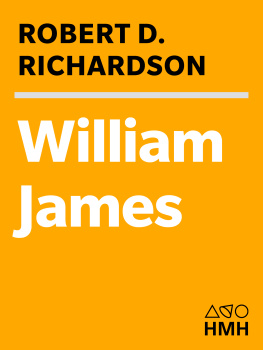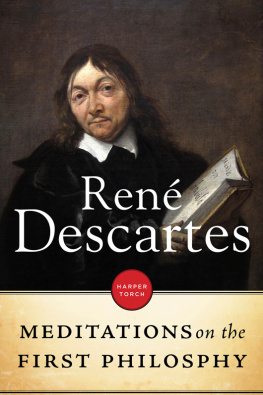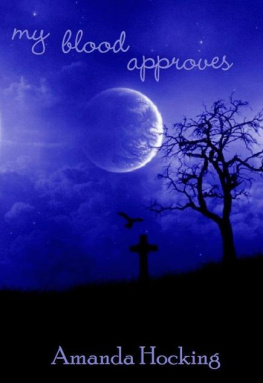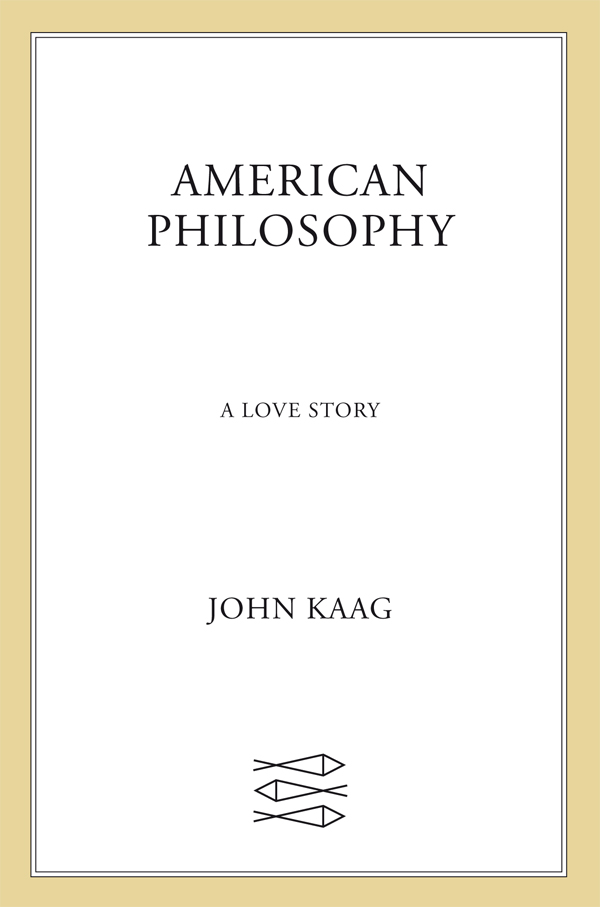Contents
Guide

The author and publisher have provided this e-book to you for your personal use only. You may not make this e-book publicly available in any way. Copyright infringement is against the law. If you believe the copy of this e-book you are reading infringes on the authors copyright, please notify the publisher at: us.macmillanusa.com/piracy.
For Carol
The Library is a wilderness of books.
Henry David Thoreau, Journal, March 16, 1852
Harvard Universitys Holden Chapel always struck me as an appropriate place to die. The forty-foot brick structure, which is the universitys third-oldest building, has no front windows. Above its entrance are four stone bucrania , bas-relief ox-skull sculptures of the sort that pagans once placed on their temples to keep away evil spirits. On April 15, 1895, when William James was asked to address an audience of young men at the Georgian chapel, it was already more than 150 years old, a fitting setting for the fifty-three-year-old American philosopher to contemplate what he had come to believe was the profoundest of questions: Is Life Worth Living?
It was a placeand a questionI became intimate with in the spring of 2008. Id spent months scouring Harvard for the origins of American philosophy. I was at Harvard on a postdoc at the American Academy of Arts and Sciencesa temporary reprieve from the permanent unemployment my loving but practical family was sure would follow after I finished my Ph.D. in philosophyand I wasnt about to squander the unexpected opportunity to prove them wrong. The aisles at Widener Library, just steps from Holden, are altogether fifty miles long. In the autumn of that year, Id walked their entire length. When I eventually came up empty, I trotted across the Yard to Houghton Library, where rare books and manuscripts are kept, and combed through the personal papers of Ralph Waldo Emerson and Charles Sanders Peirce. Still nothing. It was only November, I told myself: early days. Research fellowships are for searchingand searching and searching. I hunkered down in my cubicle at Widener and tried to eke out the manuscript I was supposed to be writing on the confluence of eighteenth-century German idealism and American pragmatism. Things were progressing, albeit very slowly.
But then, on an evening in the spring of 2008, I gave up. Abandoning the research had nothing to do with the work itself and everything to do with the sense that it, along with everything else in my life, couldnt possibly matter. For the rest of my year at Harvard I assiduously avoided its libraries. I avoided my wife, my family, and friends. When I came to the university at all, I went only to Holden Chapel. I walked past it, sat next to it, read against it, lunched near it, sneaked into it when I couldbecame obsessed with it. James had, as far as I was concerned, asked the only question that really mattered. Is life worth living? I couldnt shake it, and I couldnt answer it.
For centuries, philosophers and religious thinkers, from the twelfth-century rabbi Maimonides to the seventeenth-century Englishman John Locke, had coolly articulated the belief that life, for any number of unassailable reasons, was worth living. In the thirteenth century the Dominican friar Thomas Aquinas argued that all thingsbe they amoebas or human beingshave a natural life cycle put into place by an intelligent designer. Far be it from any of Gods creatures to disrupt it. Immanuel Kants argument, five hundred years later, was less theologically speculative. Rational beings, he said, have a duty not to destroy our own rational capacities. In Kants words, [S]uicide is not abominable because God has forbidden it; on the contrary, God has forbidden it because it is abominable.
William James had pondered the abominable since at least his early twenties. By many accounts, hed hit rock bottom in 1871, at the age of twenty-nine. As I sat on the still-frozen ground outside Holden in 2008, I had to agreemy twenty-ninth year was about as bad as it gets. One of the sketch pads Id found in Houghton contained a self-portrait James drew in red crayona young man, seated, hunched over, with an inscription over the figure: HERE I AND SORROW SIT . Most of the reasons his philosophical predecessors offered to persevere in life bored James to death. To him, they were little more than clichd maxims, out of touch with the particularities of depression and crisis. Still, he was well aware that such arguments had served as the existential anchor for an untold number of happy lives. Indeed, during his lecture in Holden Chapel he observed that his audience, a group from Harvards Young Mens Christian Association, brimmed with what he often called healthy-mindedness, a psychological and moral disposition that all but affirmed the conclusions of Aquinas and Kant.
The Harvard YMCA had been established in 1886 as an evangelical society. Most of the members of Jamess audience believed that the Bible is the Word of God and Jesus is Savior and Lord. The question of lifes worth, for these devout men, was settled well in advance of any lecture. Denying the value of human life was blasphemy, and the ultimate form of this denialsuicidean unspeakable sin. But James suspected that this affirmation of human life, as emphatic as it was universal, ignored the experience of a growing number of people who werent so sure about the value of their own lives.
James, by then quite famous as the father of American psychology and philosophy, was one of these peoplesick-souled, as he put it. My own soul, from adolescence onward, had never been terribly robust, and that rainy spring it had taken a turn for the worse. James knew something the faithful often miss: that believing in lifes worth, for many people, is a recurring struggle. Hed overdosed on chloral hydrate in the 1870s, just for the fun of it, as he wrote to his brother Henry, to see how close he could come to the morgue without actually going there. James was not alone in his curiosity. A decade later his colleague Edmund Gurney, founder of the Society for Psychical Research, took the experiment with life and death too far, testing what turned out to be a fatal dose of chloroform. In response to Gurneys death, James wrote to his brother once again. [This death] make[s] what remains here seem strangely insignificant and ephemeral, as if the weight of things, as well as the numbers, was all on the other side. The other side . As in: No. Life is not worth living.
No, as it turns out, is an answer that has much to recommend it in a place like Holden Chapel. Religious services were moved out of the building in the 1780s, and in the next century it served as a chemistry lab and classroom for the nascent Harvard Medical School, where cadavers were dissected. The Gross Clinic , painted by Thomas Eakins in 1875, gives some idea of the nature of surgery at the time. In it, several doctors perform an operation on a child, working without gloves as their patients insides fester in the open air. The patients mother sits nearby in horror, covering her face in a futile attempt to escape what James understood all too well: At the end of the existential day, we are all a bunch of smelly carcasses. James would have been aware of the chapels gory medical history as he pondered lifes worth with the YMCA.
* * *
On March 11, 2008, I watched my father die. His liver was in bad shape. His esophagus was shot to hell. Saying you have esophageal squamous cell carcinoma is often a very long way of saying you drank too much, which my father did. At the end, tragically, ironically, he couldnt even swallow. The same thing that beat up his liver and throat also destroyed his family. I didnt much like him. So I surprised myself when I accepted my stepmothers invitation to watch him die on a snowy evening at a hospital in Buffalo, New York. But there he was, swollen hands, puffy face, no breathsomething out of Dr. Grosss clinic. It all seemed like a cruel joke. Maybe life was worth living. But maybe you would live only to die surrounded by a distraught second wife and your estranged and dry-eyed sons.








